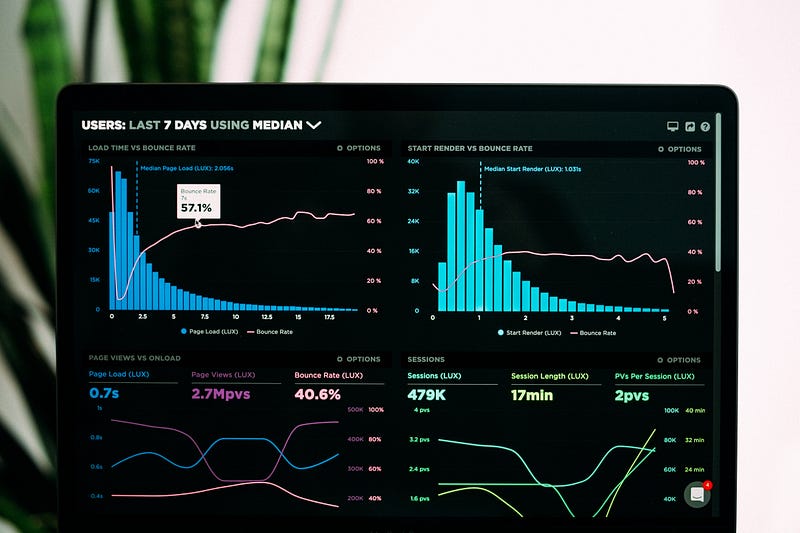Advancing Human-AI Interaction: Exploring Visual Question Answering (VQA) Datasets

This article provides a comprehensive exploration of Visual Question Answering (VQA) datasets, highlighting current challenges and proposing recommendations for future enhancements.
Visual Question Answering (VQA) stands at the intersection of computer vision and natural language processing, posing a unique and complex challenge for artificial intelligence. As AI strives to emulate human-like understanding, VQA plays a pivotal role by demanding systems to recognize objects and scenes in images and comprehend and respond to human-generated questions about those images. The significance of VQA extends beyond traditional computer vision tasks, requiring algorithms to exhibit a broader understanding of context, semantics, and reasoning. The successful development of VQA algorithms holds the promise of achieving a milestone in artificial intelligence, where systems can seamlessly interpret and respond to visual information like human cognition.

For instance, consider an image, such as the one above, where the model is presented with a question like ‘Where is the child sitting?’ In this scenario, the VQA exhibits its prowess by furnishing a response that accurately identifies the child’s location as sitting in a bathtub. This exemplifies the capabilities of Visual Question Answering, transcending mere image recognition. VQA empowers us to glean meaningful insights by interpreting and responding to inquiries about the content depicted in the image. As we advance in the development of VQA, we move closer to a future where artificial intelligence systems not only recognize visual elements but also grasp the intricate relationships between them. This opens up new possibilities for sophisticated interactions between machines and humans, heralding a transformative era in the field of artificial intelligence.
Exploration of VQA Datasets:
VQA datasets are pivotal to developing and evaluating AI systems, serving as crucibles for training models to comprehend and respond to visual and textual cues. This section conducts a comprehensive examination of prominent VQA datasets, shedding light on their unique characteristics, challenges, and potential avenues for improvement.
VQA v2.0:
VQA v2.0, or Visual Question Answering version 2.0, is a significant benchmark dataset in computer vision and natural language processing. An extension of its predecessor, VQA v2.0 incorporates images sourced from the widely used COCO (Common Objects in Context) dataset. The dataset is specifically curated to facilitate research in developing and evaluating models capable of understanding images and answering diverse and open-ended questions related to those images.
Comprising a vast array of images, each accompanied by a set of questions, VQA v2.0 emphasizes the intricacies of visual understanding. The questions cover a broad spectrum of topics and require nuanced comprehension, ranging from straightforward object recognition to more complex scenarios demanding reasoning abilities. Notably, the dataset includes open-ended questions, allowing for various valid answers and multiple-choice questions, adding a layer of complexity to model performance evaluation.
Researchers and developers often leverage VQA v2.0 to assess the robustness and generalization capabilities of VQA models. The challenges presented by this dataset contribute to advancements in the intersection of computer vision and natural language understanding, pushing the boundaries of what models can achieve regarding visual comprehension and reasoning.
COCO-VQA holds a central position within the Visual Question Answering (VQA) landscape, offering an extensive repository of images accompanied by associated questions and answers. It’s remarkable diversity and scale position it as a cornerstone for evaluating and benchmarking VQA algorithms. Despite its significance, a thorough analysis uncovers inherent biases within COCO-VQA that have the potential to influence the learning trajectory of AI models. The brilliance of COCO-VQA is overshadowed by biases present in both the questions posed and the provided answers. This subsection delves into a meticulous scrutiny of these biases, underscoring the imperative need to rectify them for the sake of fostering fair and unbiased evaluations of algorithmic performance. Biased datasets pose a significant risk, potentially leading to the development of models that excel in specific areas while performing inadequately in others. To address these biases within COCO-VQA, strategic interventions become imperative. While augmenting the dataset’s size emerges as a potential solution, there is also exploration into refining annotation instructions and leveraging adversarial training techniques. These interventions aim to culminate in the creation of a more comprehensive and unbiased dataset, ensuring that the evaluation of algorithms remains grounded in fairness and accuracy.
COCO-QA: Shifting attention to COCO-QA, questions are categorized based on types such as color, counting, location, and object. This categorization lays the groundwork for nuanced evaluation, recognizing that different question types demand distinct reasoning strategies from VQA algorithms. Building upon categorization, a proposal suggests mean per-question type performance as an evaluation metric. This approach advocates for a more comprehensive assessment, ensuring that VQA algorithms exhibit proficiency across diverse question types, fostering a more balanced and equitable evaluation framework.
CLEVR:
The Compositional Language and Elementary Visual Reasoning (CLEVR) dataset is a specialized collection designed to push the boundaries of visual reasoning capabilities in artificial intelligence models. Created as a benchmark for evaluating machines’ reasoning and understanding skills, CLEVR provides a unique set of challenges for models operating in the intersection of computer vision and natural language processing. What sets CLEVR apart is its focus on 3D-rendered scenes, introducing complexity beyond simple image recognition. The dataset consists of images with intricate arrangements of objects, colors, shapes, and spatial relationships. Each image is accompanied by questions requiring models to perform compositional reasoning — understanding how various elements interact to derive answers.
Questions in the CLEVR dataset range from basic queries about object identification to more intricate inquiries demanding logical reasoning. This dataset is a robust evaluation platform for assessing a model’s ability to generalize understanding across diverse scenarios, fostering research in advanced visual reasoning and comprehension capabilities. Researchers and developers use CLEVR to benchmark and improve the performance of models in handling complex visual questions. As models are challenged with increasingly sophisticated reasoning tasks, the insights gained from working with the CLEVR dataset contribute to developing more capable and versatile artificial intelligence systems.
GQA (Visual Genome Question Answering):
The GQA dataset represents a comprehensive and challenging resource for evaluating artificial intelligence models’ visual understanding and reasoning capabilities. Derived from the Visual Genome dataset, GQA assesses a model’s ability to comprehend and respond to complex questions about images, emphasizing detailed scene understanding and spatial reasoning.
GQA consists of diverse images, each accompanied by questions requiring nuanced comprehension and reasoning. The dataset is known for its wide variety of question types, ranging from object recognition to relationships between objects and spatial arrangements within a scene. The questions often involve higher-order reasoning, encouraging models to integrate information from different parts of the image and demonstrate a deeper understanding of visual content.
By leveraging images from the Visual Genome dataset, GQA introduces a rich context for questions, enabling models to draw on many scene details. This context-driven approach challenges models to perform object recognition and infer relationships and dependencies between elements in the scene, fostering advancements in holistic scene understanding.
Researchers and practitioners in computer vision and natural language processing utilize GQA to benchmark and advance state-of-the-art visual question answering. The challenges presented by this dataset contribute to developing models with improved understanding and reasoning about visual content, facilitating progress in academic research and real-world applications.
Visual Dialog:
The Visual Dialog dataset is a pivotal resource in multimodal artificial intelligence, specifically designed to address the challenges of dialogue-based question answering about images. Created to foster research at the intersection of computer vision and natural language processing, Visual Dialog offers a unique platform for evaluating models’ abilities to engage in contextual understanding, dialogue generation, and image-related question answering.
Comprising images, dialogues, and associated questions, Visual Dialog simulates a conversational setting, where models must not only comprehend individual images but also understand the flow of a conversation and respond coherently. The questions in the dataset are diverse and cover a wide range of topics, requiring models to draw upon contextual information and maintain a coherent understanding of the ongoing dialogue.
The dataset is structured to encourage models to consider the entire conversational context when generating responses. This fosters the development of models capable of reasoning across multiple dialogue turns, integrating information from text and images. Visual Dialog reflects real-world scenarios where intelligent agents must understand images in a dynamic conversation. Researchers and developers use the Visual Dialog dataset to benchmark and advance the capabilities of models in handling multimodal interactions. The challenges presented by this dataset contribute to developing more sophisticated dialogue systems, improving the synergy between visual and textual understanding in AI applications.
VizWiz:
The Visual Question Answering dataset for the Visually Impaired (VizWiz) is a unique and impactful dataset designed to address the challenges faced by individuals with visual impairments. Created to promote inclusivity and accessibility in artificial intelligence applications, VizWiz focuses on real-world scenarios by incorporating images of blind users. The dataset primarily serves as a benchmark for training and evaluating models to understand and respond to visual questions in a manner that aligns with the experiences of visually impaired individuals.
Key features of the VizWiz dataset include:
- Real-World Challenges: VizWiz introduces challenges encountered in daily activities, providing a realistic and diverse set of images relevant to visually impaired users’ lives.
- Inclusive Questioning: The dataset includes questions related to the content of the images, allowing models to address queries about the visual aspects of scenes, objects, or activities.
- Accessibility Focus: By incorporating images taken by blind users, VizWiz encourages the development of models that can cater to the needs of individuals with visual impairments, contributing to the broader field of inclusive technology.
Researchers and developers leverage the VizWiz dataset to advance the development of AI models that enhance the accessibility of visual information. The challenges presented by this dataset contribute to creating technologies that empower individuals with visual impairments to interact more seamlessly with the visual world through artificial intelligence.
Challenges in Existing VQA Datasets
In the pursuit of advancing VQA systems, a critical examination of existing datasets reveals substantial challenges that impede the holistic evaluation of algorithms. A key concern lies in formulating questions, which often exhibit biases that can significantly impact the performance assessment of VQA models. This section delves into the intricate issue of biases in question formulation, emphasizing the need for meticulous instructions to guide human annotators in generating questions devoid of prejudiced patterns.
Another pivotal challenge emerges from the size of current datasets and its implications on algorithmic training. Despite the growth in size and diversity of VQA datasets, there is a notable gap in providing algorithms with sufficient data for robust training and evaluation. Experimental insights, illustrated by training a simple MLP baseline model under varying dataset sizes, underscore the untapped potential for improvement through increased data volume.
Furthermore, the section scrutinizes the limitations inherent in the evaluation metrics commonly employed in VQA benchmarks. The conventional approach of treating every question equally is critiqued, prompting a call for a more nuanced evaluation strategy. The proposition of mean per-question type performance as a benchmarking metric is introduced to address the disparities in question difficulty and enable a comprehensive assessment of VQA algorithms. In tackling these challenges head-on, we pave the way for the evolution of future VQA datasets that can serve as robust benchmarks for assessing the capabilities of AI systems in human-like visuals.
In envisioning the next frontier for VQA datasets, it is imperative to address existing limitations and embark on a trajectory that enhances the quality and depth of evaluations. The following recommendations delineate key focus areas for developing future VQA datasets.
Larger Datasets: As demonstrated by empirical experiments, the size of VQA datasets significantly impacts the accuracy of algorithms. The call for larger datasets arises from the observed trend that algorithm performance continues to improve with the expansion of training data. Research indicates a positive correlation between dataset size and algorithm performance. Expanding the dataset offers a wealth of diverse instances, enabling models to generalize better across a myriad of scenarios.
Code example for increasing dataset size for improved accuracy:
# Sample code snippet to augment dataset size using data augmentation techniques
from torchvision import transforms
# Load your dataset and define transformations
dataset = YourVQADataset(...)
transform = transforms.Compose([
transforms.RandomResizedCrop(224),
transforms.RandomHorizontalFlip(),
transforms.ToTensor(),
])
# Apply transformations to increase dataset size
augmented_dataset = AugmentedVQADataset(dataset, transform)
Reducing Bias: Acknowledging the persistent issue of bias in VQA datasets and addressing this challenge requires a multi-faceted approach. Beyond algorithmic adjustments, providing explicit instructions to human question generators is pivotal. Detailed guidelines for question generation can mitigate bias. Clear instructions can encourage a more diverse set of questions, reducing biases inherent in images and queries.
Code example for strategies to reduce bias:
# Sample code snippet illustrating guidelines for generating unbiased questions
def generate_unbiased_question(image, context):
"""
Function to generate unbiased questions given an image and context.
Implement guidelines for reducing bias in question generation.
"""
# Your implementation here
return unbiased_question
Nuanced Analysis for Benchmarking: Recognizing that not all questions hold equal weight, future VQA datasets should adopt nuanced benchmarking. Mean per-question type performance emerges as a more meaningful metric, offering a detailed evaluation across various question categories. Introducing question categorization and evaluating performance based on question types enables a more comprehensive assessment of VQA algorithms.
Code example for implementing nuanced benchmarking:
# Sample code snippet for implementing nuanced benchmarking
def evaluate_per_question_type_performance(model, dataset):
"""
Evaluate model performance across different question types.
Implement categorization and assess performance per question type.
"""
# Your implementation here
return per_question_type_performance
These recommendations serve as guideposts, steering the community toward datasets surpassing current benchmarks in size and embodying reduced biases and nuanced evaluations. The accompanying code examples provide practical insights into implementing these recommendations.
Conclusion:
The journey through the landscape of VQA datasets has been a critical reflection, unveiling both the advancements and pitfalls in the current state of human-AI interaction. The challenges embedded in biases, dataset sizes, and benchmarking metrics have been meticulously dissected, with corresponding solutions poised for implementation.
The journey does not conclude here; instead, it extends into the uncharted territories of future Visual Question Answering developments. The quest for more sophisticated algorithms capable of nuanced reasoning about image content holds promise for novel research areas. As we venture forward, the focus should not only be on dataset enhancements but on the very core of VQA intelligence. Beyond datasets, the landscape of VQA beckons exploration into emerging research areas. Developments in algorithmic sophistication, the fusion of modalities, and the seamless integration of natural language understanding and computer vision will undoubtedly shape the future of VQA. The path ahead is dynamic and promises to uncover new frontiers in human-AI collaboration.
References
- Kafle, K., & Kanan, C. (∗ Chester F. Carlson Center for Imaging Science Rochester Institute of Technology, Rochester, NY, 14623, USA kk6055, kanan@rit.edu)
- He, K., Zhang, X., Ren, S., & Sun, J. (2016). Deep residual learning for image recognition. In The IEEE Conference on Computer Vision and Pattern Recognition (CVPR).


